The Navimow X3 is somewhat the kind of mower that makes you forget what mowing meant. No need to lay down cables, no need to chase after favorable weather, and even less to push anything. In this test of the Navimow X3, I invite you to discover why this supercharged robot, equipped with sensors, embedded intelligence, and connectivity, truly changes the game in the world of high-end robotic mowers.
We had the opportunity to discover the Navimow X3 at an event organized in Chantilly by the brand. Then I had the chance to test it over several months, in a garden with its nooks and crannies, its obstacles, and its little surprises. Futuristic design, ultra-complete application, precise mowing… it’s hard not to be won over. But enough of the chatter: unboxing, installation, mapping, obstacle testing, and detailed feedback, I am telling you everything. Get ready, it’s going to cut!
Unboxing the Navimow X3
Honestly, when you receive the Navimow X3 for the first time, you immediately think that this is not just any mower. Just the box sets the tone: big, sturdy, well protected.
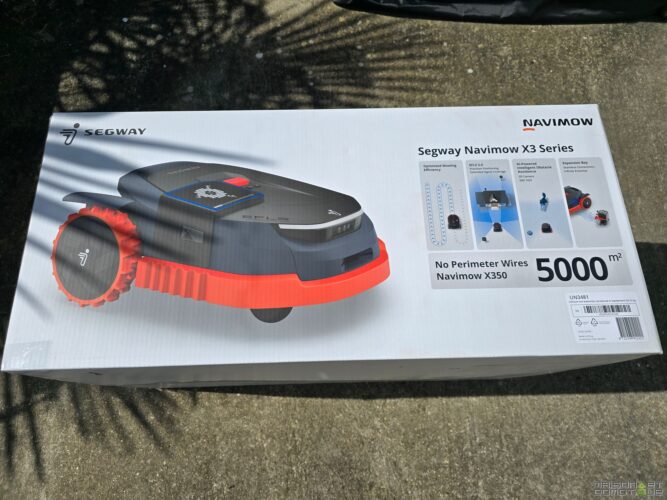
And inside? A real technological gem. You almost need two people to lift the beast. With its 20 kg well distributed, it imposes its style right out of the box.
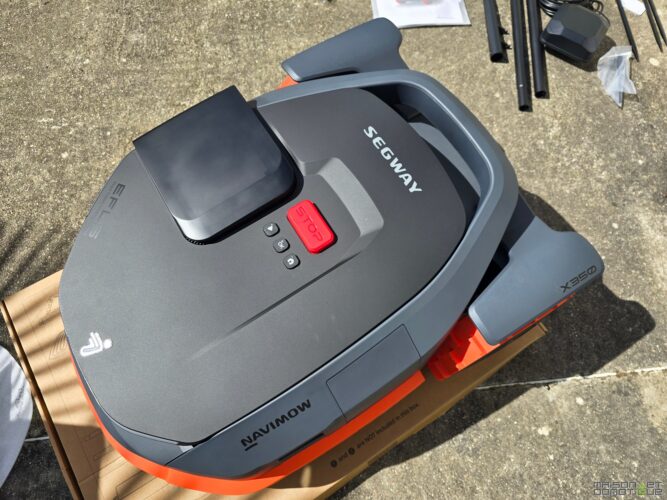
The look is modern, with finishes that exude quality. We are dealing with a sober, elegant, slightly futuristic body, with a nice black coat. What immediately catches the eye is the circular screen with a diameter of 22 cm, located at the top of the mower. Yes, a giant color screen, for a mower!
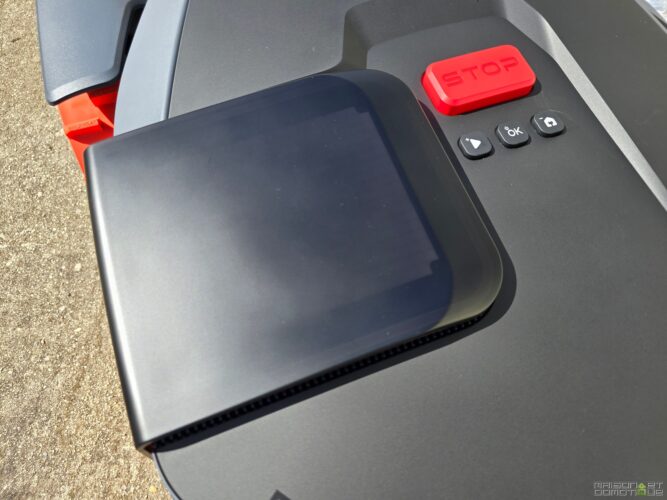
In terms of dimensions, the Navimow X3 plays in the big leagues: about 70 cm long, 55 cm wide, and 30 cm high. It’s not lightweight, but that’s precisely what allows it to be well anchored to the ground. It’s not here to mess around. When you place it in the garden, you feel that it’s serious business.
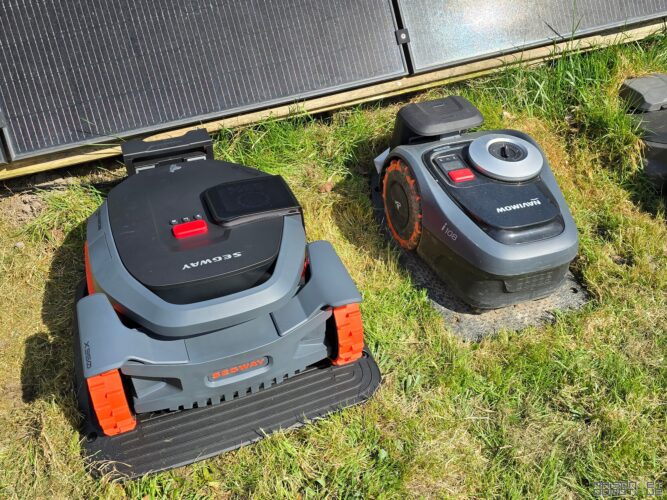
In the box, you also find a whole series of accessories neatly packed.

The fully integrated charging base, well thought out, with its anchor points to the ground and its closed design that prevents grass from growing underneath.
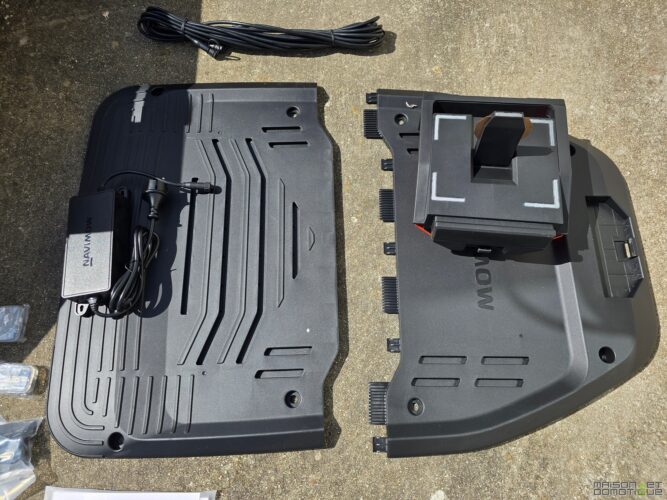
A 10-meter cable for power, an RTK antenna with its mounting tubes and ground stake, a few screws and keys (very handy for securing the base without having to disassemble everything).

And of course, the replacement blades (because precise cutting requires maintenance).
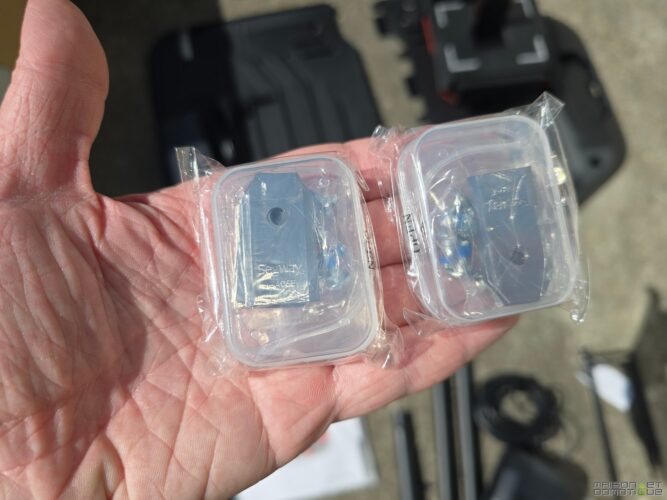
And then there are the little extras that we like: a QR code to download the Navimow application, straps to neatly attach the cable along the antenna tube, a quick start guide, and even an extension to position the antenna far from the base if needed.
But what really makes a difference right from the unboxing is this impression that everything is well thought out. Nothing has been left to chance. Even the RTK antenna, which ensures centimeter-precise mowing, integrates discreetly into its tube. The aesthetics are there, and so is practicality.
You can feel that Segway wanted to make a strong impression with the X3. This is not just a robotic mower; it is an ultra-connected tool, ready to meet all challenges of a large garden.
Where the Navimow X3 really stands out is in the technological aspect. We are no longer in the mower that just follows a wire on the ground. No, here, it’s GPS, 300° vision, total connectivity, and even an intelligent navigation system called EFLS 3.0. Yes, just that!

Let’s start with the robot’s eyes. Because it has them, and several! An ultra-wide-angle front camera, accompanied by two side cameras.
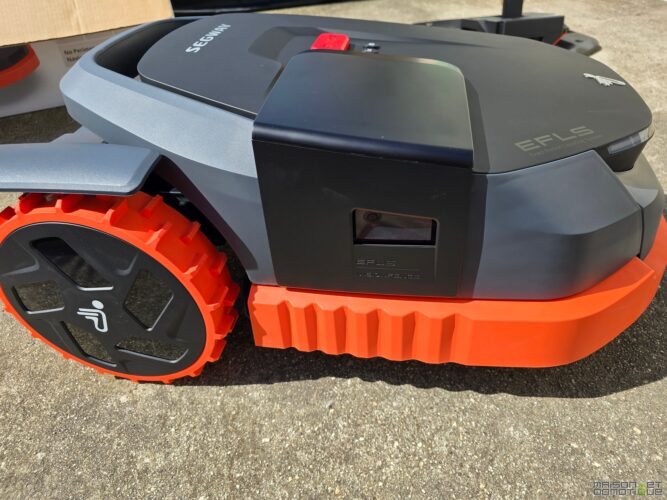
Result: a nearly panoramic view at 300°. Thanks to this, it sees obstacles from a distance, detects trees, toys, traffic cones, low branches… It can even see very thin objects (like a frisbee laid flat, tested and approved). It gently adapts its trajectory, never crashing into them. A real defensive driving.
This is not just for show: this vision is coupled with an onboard intelligence system capable of interpreting what it sees. It doesn’t just detect an obstacle; it understands that it should not go over it. And it does this with impressive fluidity. I tested it with very different objects (a ball, a flower pot, a block of concrete, a water gun…): it elegantly avoids all of them. Almost better than a human.
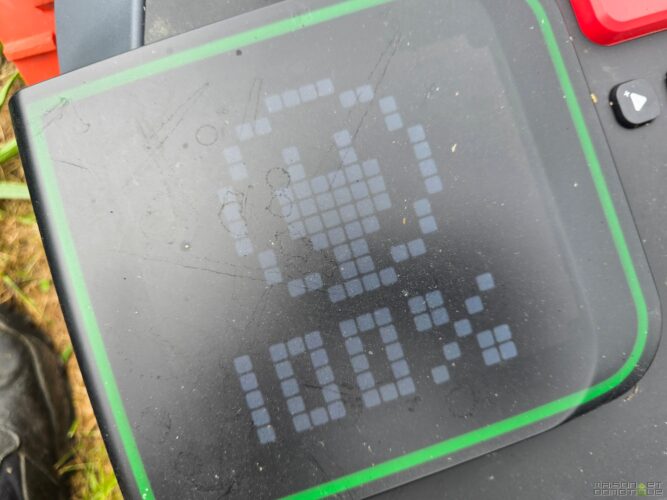
Another technological gem: the screen. With a diameter of 22 cm, it allows direct interaction with the machine, thanks to the buttons on its side, without even needing to take out your phone. The information is clear, the buttons are well visible, and we even get small pixel art animations at startup. It gives a nice retro-futuristic feel. And in case of emergency, a big red “STOP” button is there to cut everything immediately.

On the connectivity front, the Navimow X3 plays in the champions’ league: Bluetooth, Wi-Fi 2.4 and 5 GHz, but also an integrated 4G chip with a year of service included. The result? You can control it from your couch or from the other side of the world. And of course, it is compatible with Google Home and Alexa (even though honestly, the Navimow app is already super comprehensive).
The cherry on the cake is the EFLS 3.0 system. This combines data from the RTK antenna (for centimeter-accurate GPS), cameras, and a TF flight sensor. Thanks to this, the robot constantly knows its position in space, even in areas with poor signal. It doesn’t go around in circles, doesn’t get lost, and most importantly, it can return to its base without struggling, even in a complicated garden.
Oh, and I almost forgot: it can climb slopes of up to 50%, or about 26°. It does this with a quiet assurance, powered by its large knobby wheels with double rubber treads. Even on uneven terrain, it stays the course.
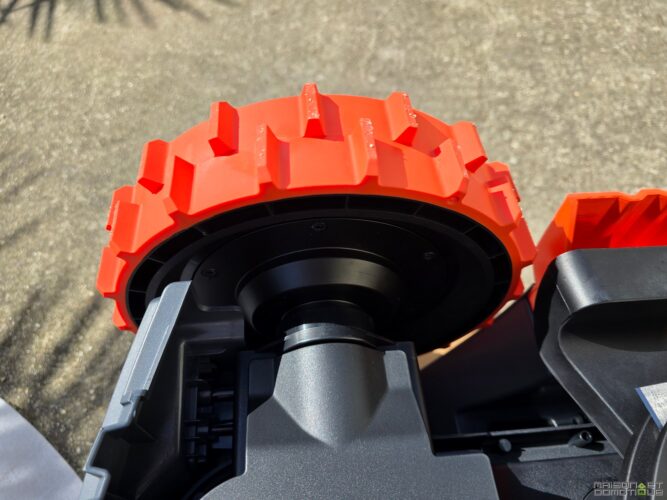
In short, if we had to summarize this unboxing in one word: impressive.
Installing the Navimow X3: between simplicity and precision
Installing a robotic mower often feels daunting. But with the Navimow X3, Segway really worked to make the whole thing almost pleasant. Yes, pleasant.
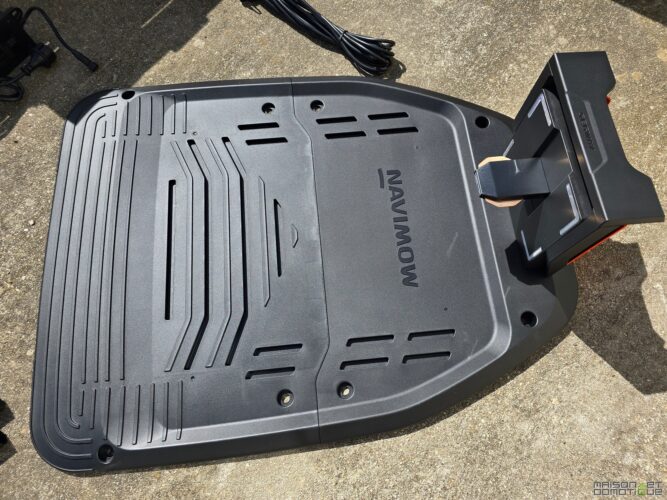
First, the charging base. One might think it’s just a stand to charge the robot, but no, here it’s a full base, very stable, with a closed surface that prevents grass from growing underneath. Practical, because a patch of tall grass under the base would look odd for a robotic mower. To fix it to the ground, sturdy plastic screws and a supplied key. Nothing to complain about.
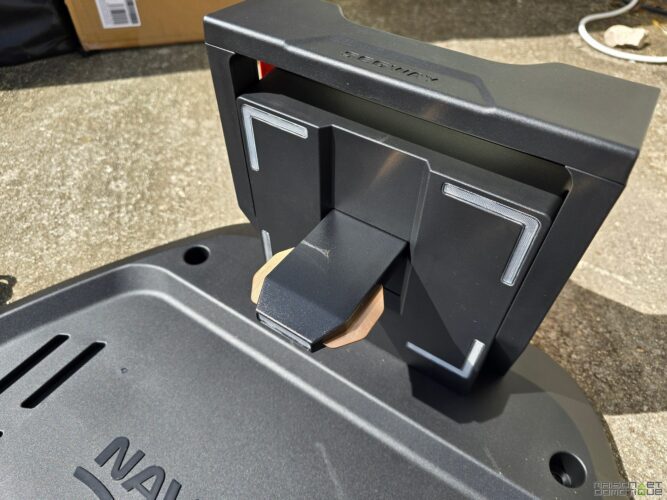
However, a small piece of advice: slide a piece of geotextile underneath if you want to be free from weeds. And remember to choose a well-open space toward the sky, because the station is also the reference point for the satellite signal. Although technically, it’s the RTK antenna that does most of the work on the precision side.
Speaking of the RTK antenna, let’s talk about it. It comes with a long cable (5 to 10 m depending on the kits) to place it further from the base if needed. You can secure it with a stake in the grass or screw it to a concrete slab. The important thing is that it has a clear view of the sky. No roof, no wall, no tree blocking the view. If you have solar panels in a quiet corner, that’s often a good spot.
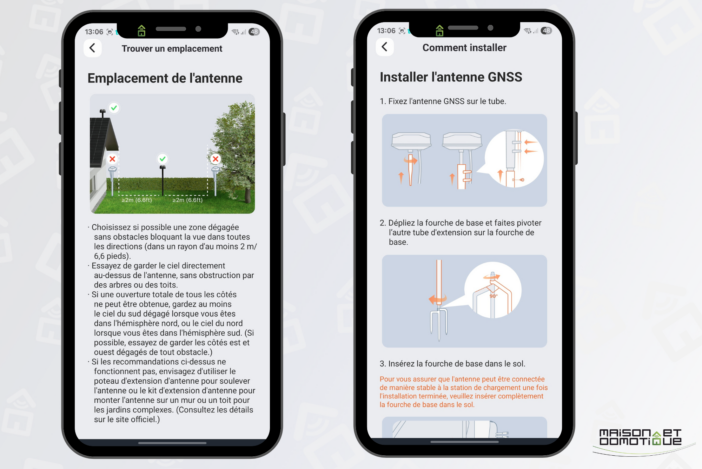
The mounting is simple, with a metal tube where the antenna fits. The only small regret: the cable goes outside the tube, not inside. It’s not dramatic, but it would have looked neater (and protected from the elements or from trimming head strikes).
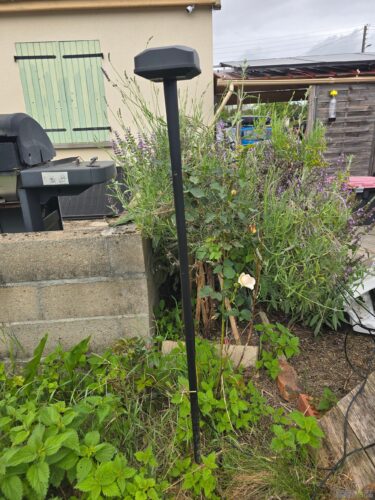
Once the base and antenna are in place, you plug everything in, press the button and… magic! A welcome animation appears on the robot’s beautiful screen. It shows its charge level, detects available Wi-Fi networks (yes, it captures both 2.4 GHz and 5 GHz), and offers to start pairing through the Navimow application.
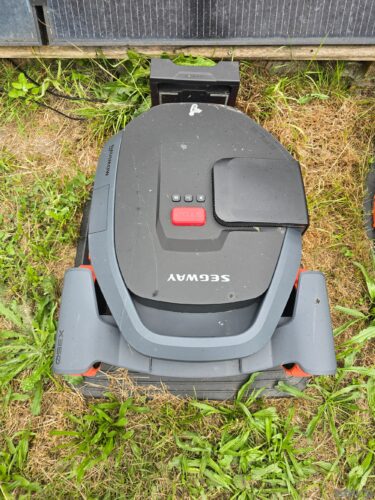
Honestly, pairing is a piece of cake. You open the app, choose “X3 Series,” you turn on the mower, you press OK, and bam! It connects by itself.
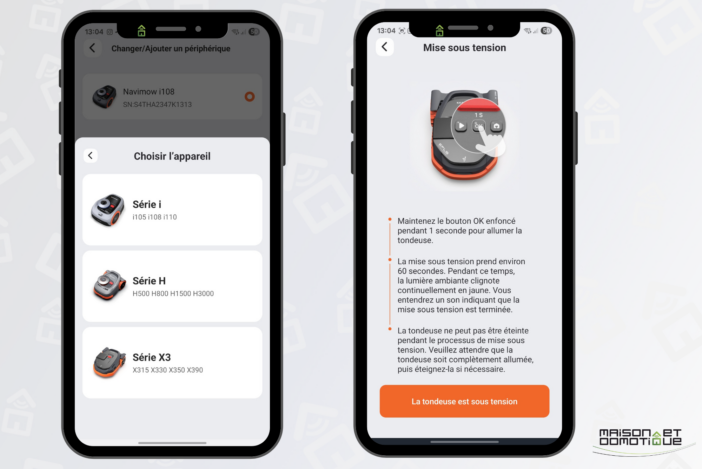
If an update is available, it downloads directly, with a message “OTA” displayed on the screen (Over The Air, for those in the know).
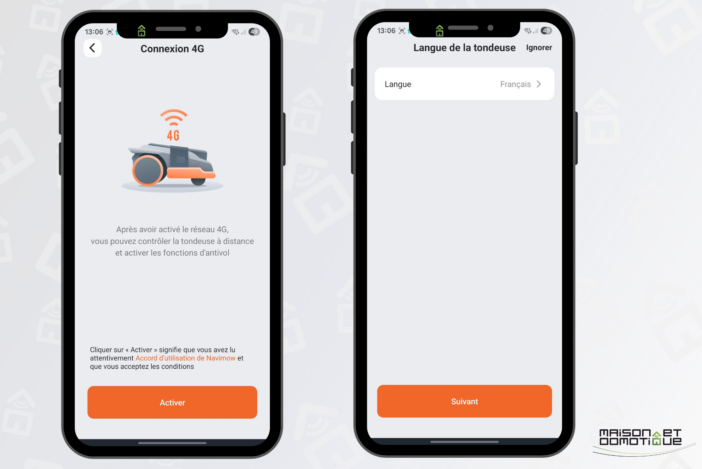
In a few minutes, everything is ready. No need for a peripheral cable to bury (thanks to RTK technology!), no need to spend hours struggling. You place it, plug it in, make a few adjustments, and off you go.
Next comes the mapping of the garden. And let me tell you, once again, it’s a fun… and impressive moment.

Here, there are two options: manual mapping or automatic. In manual mode, you just take the phone, which acts as a remote control, and manually drive the robot to outline the garden. You mark a starting point, then trace the borders at a safe distance (10-15 cm is good). If you miss a turn, no panic: you can erase and start over just a section. No need to redo everything.
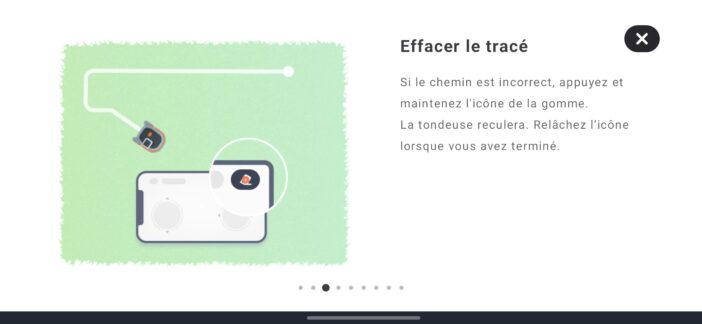
But where the Navimow X3 impressed me is with the automatic mapping. You place it at the edge of the lawn, press a button, and it starts scanning the edges by itself. It detects the color difference between the lawn and the tiles, gravel, and borders. And it does this exceptionally well. Even the complex corners, it understands them. Well, sometimes it gets a bit confused on very low areas or very thin objects (like the edge of a super-flat solar panel), but overall, it’s astonishing.
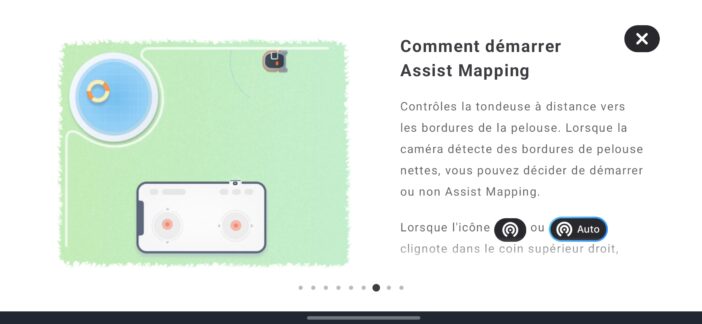
It is possible to create several independent zones, connect two zones with a path, define forbidden zones, draw shapes by hand (yes, you can write your name on the lawn if you want!), or activate “vision fences.” These are areas within which the robot should not use its cameras (useful for crossing a concrete path or an area without grass). Activate with caution, of course.
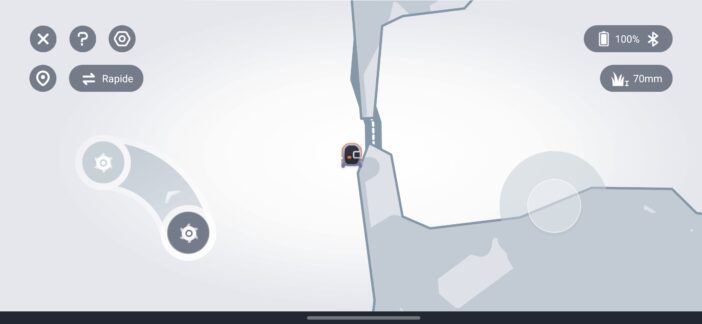
Another cool feature: you can adjust the cutting height by zone. For example, 4 cm in the lawn in front of the house, 6 cm in the orchard. You can even choose the mowing direction, or alternate with each pass to avoid tracks.
And if you want to modify a zone, there’s no need to start from scratch. You select the zone, click on “edit,” adjust the boundary, divide, rename, adjust the height, or change the mowing style. Everything is fluid.
Honestly, I have tested many apps for connected mowers, and this one is in my top 3. Responsive, intuitive, stable, and above all, very comprehensive. Even the slightly geeky options, like the overlapping zone (where the robot is allowed to extend over the tiles to cut all the way to the end and thus avoid using the trimmer), are well explained.
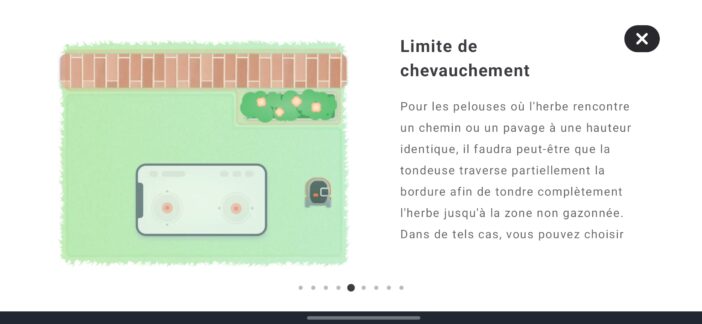
And once the map is ready… you just have to press “Mow.” And there, the real show begins.
Field Tests: Navigation, Obstacles, Efficiency
Well, once the Navimow X3 is configured and mapped, it’s time to see it in action. And there… wow. It’s a bit like watching a little intelligent robot come to life in your garden. From the first movements, you can tell that this is not just a basic mower.
The speed, already. This thing can reach 1 meter per second. Yes, you read that right. It’s the Usain Bolt of mowing. The first time you see it zoom across the lawn at that speed, you almost think it’s going to take off. Yet, it remains super stable, even when the terrain is slightly uneven. And it’s not just for show: this speed allows it to cover large areas quickly, without sacrificing quality.
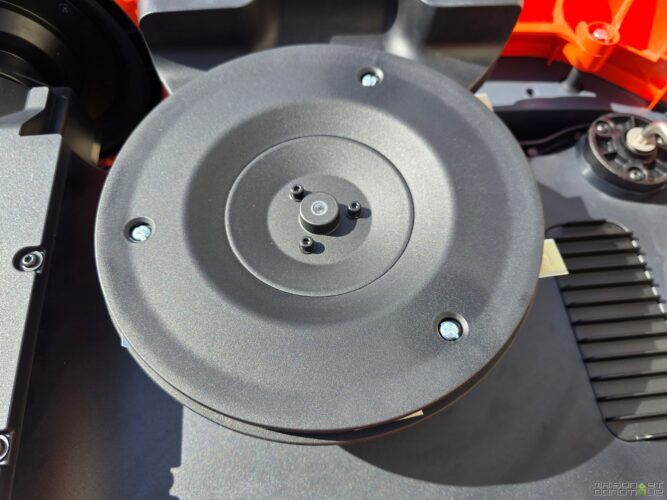
Let’s talk about the mowing itself. The 23.7 cm cutting disc, equipped with six blades, ensures a clean and uniform cut. It is slightly offset to the right, which allows it to get as close as possible to the borders. Well, there’s always a little grass left to do by hand in certain corners, but honestly, it’s minimal.
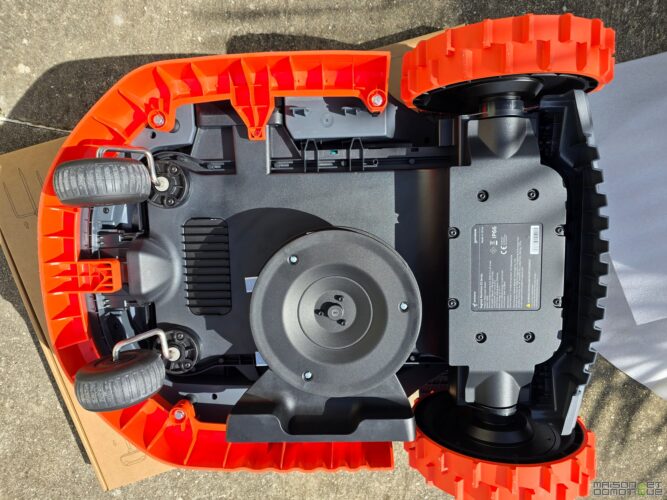
The cutting height can be adjusted via the app, between 2 and 7 cm. And the adjustment is motorized! No need to unscrew anything, you change the height from your couch. I tested several heights on different types of grass, and the result is always clean. Even in slightly irregular areas, the deck follows the terrain well.
But the most impressive part is the obstacle management. The robot sees everything. Kids’ toys? It goes around them. A frisbee? It stops dead. A low branch grazing the ground? It hesitates, analyzes, backs up, changes direction. I even tested it with a small flower pot, a piece of concrete, and a plastic hedgehog (yes, really): it avoided them all without any problem. I also tried it with a moving ball, and it spotted it mid-run.
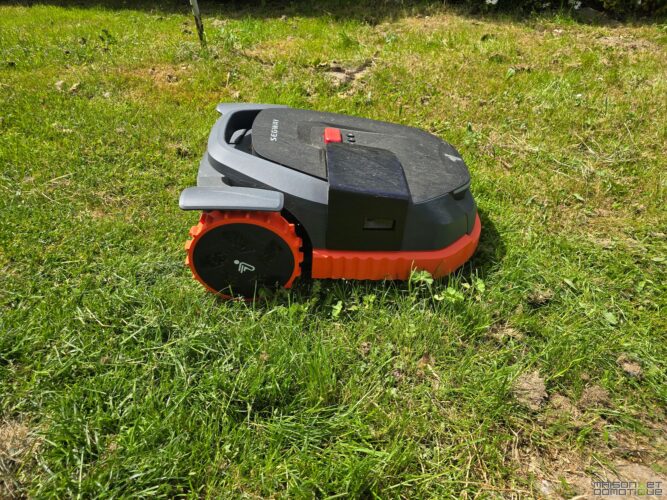
The combination of cameras and the EFLS system allows for rapid and intelligent reactions. It doesn’t just take a detour: it chooses the best trajectory in real time. It’s astonishing. Even in narrow passages (like 80 cm between two trees), it slips through like a pro, taking the time to maneuver cleanly.
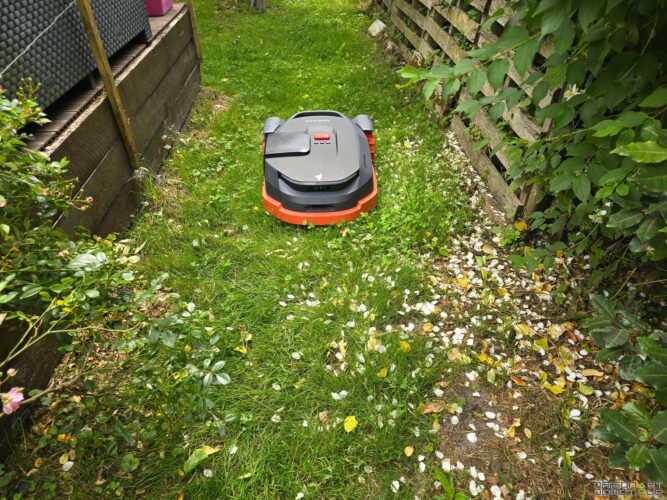
Of course, the application offers many options to customize operation.
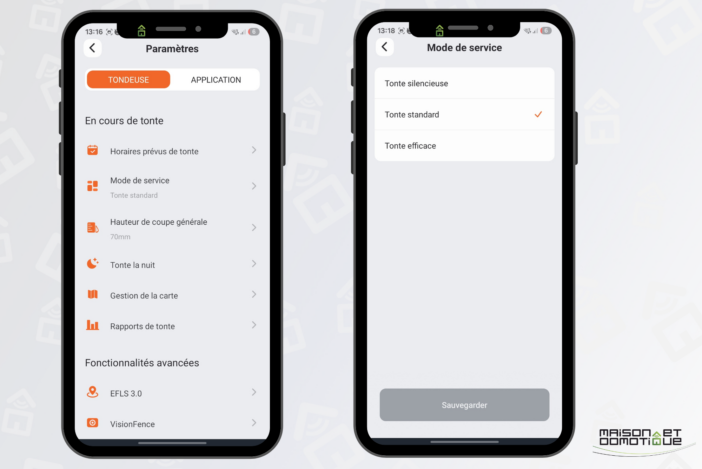
There’s obviously a calendar to schedule mowing times. Here I mow, for example, every morning this week, which prevents the robot from being in the way in the afternoon.

As for noise, it’s velvety. If you hear anything, it’s the wind or the birds. Not the X3. The X3 works in silence, even when cutting at full speed. Perfect for mowing early in the morning or late in the day, without disturbing neighbors or children playing nearby.
And then there’s the autonomy. Depending on the model (6, 8, or 10 Ah), it can cover up to 10,000 m². The charging time is impressive: between 60 and 80 minutes, depending on the battery. It’s super fast for a machine of this size. As a result, it can easily perform several cycles per day, even on very large grounds.
Even the returns to base are neat. It slows down, adjusts its trajectory to the millimeter, connects smoothly. No jerks, no loud plastic sounds when forcing. And if it rains? No worries. It’s IP66, so perfectly waterproof to dust and water splashes. If it detects rain, it can even refuse to go out to protect its cutting system.
Honestly, in this price range and performance, it’s hard to find a comparable product. It passed all tests with flying colors, whether for obstacle detection, complex navigation, or mowing quality.
I prepared a video showing the unboxing, installation, and use:
My opinion after 3 months of use
After several months of watching the Navimow X3 cruise around my garden like a pro, I can say without hesitation: this robot impressed me. Yet, I’ve seen plenty of connected mowers, promises of perfect mowing, supposedly intelligent apps… but here, Segway has really set the bar very high.
What I loved is this sense of serenity. You start mowing, and you know it will go well. No silly stalling on a border, no questionable U-turns in the middle of a straight line, no forgotten area at the back of the yard. The X3 manages it. It sees far, reacts quickly, learns. And it does this in silence. You almost forget it’s working.
The app is also a real success. Everything is clear, fluid, fast. You can control your mower from your deck chair, your couch, or even your vacation spot. The built-in 4G is a huge comfort, especially when you want to check that everything is fine without being on site. And the ability to create and adjust maps at will is really valuable.
As for the small flaws? There are a few, of course. The RTK antenna cable that doesn’t go inside the tube, for example; it’s a bit of a downside. The robot also maintains a fairly wide safety margin along certain borders, even when we’ve mapped it close. But, well, it might just be an excess of caution… and somewhere, that’s reassuring.
What I would really like now is an update that allows for slightly reducing these safety margins, to achieve an even neater finish along the walls. Because with its offset cutting disc, it clearly has the potential to do even better in those areas. But hey, the accessory that’s coming out, the famous trimmer, has to be justified, which is designed to sit on the side of the robot, where a hatch for accessories has been planned:
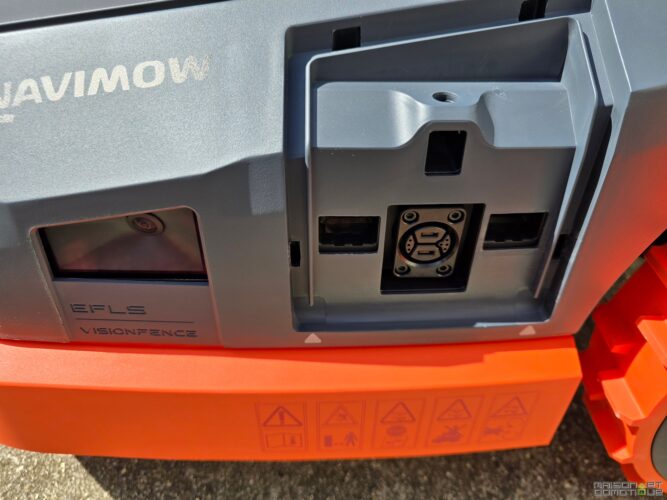
We would have liked to be able to connect to the camera to see what’s happening, a bit like what Mammotion offers, for example. In the case of a second home, or when going on vacation, it allows you to take a round of your garden by controlling the robot from afar to ensure that everything is fine at home.
But overall, the Navimow X3 is one of those rare products that you install once and forget about. It works alone, it does its job well, it adapts to your garden, and it saves you a ton of time. And that, is priceless. The i105e/i108e models discovered last year were already excellent. But suitable for small yards. Here, the Navimow is designed for large areas, with 4 versions covering 1500 (X315 model), 3000 (X330 model), 5000 (X350 model), and 10000 m² (X390 model), for a price ranging from €2500 to €5000. Note that for complex garden configurations, the system can be supplemented by an additional RTK antenna, ensuring optimal coverage across the entire property.
To get it, however, you will need to go through an authorized dealer, whose list is available on the manufacturer’s website.


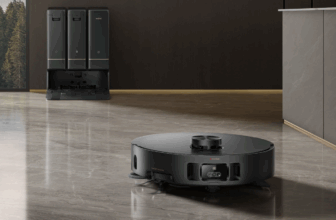
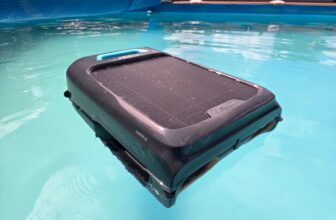
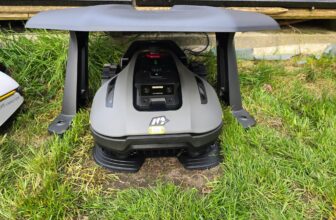
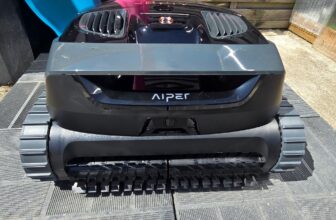

Please remain courteous: a hello and a thank you cost nothing! We're here to exchange ideas in a constructive way. Trolls will be deleted.